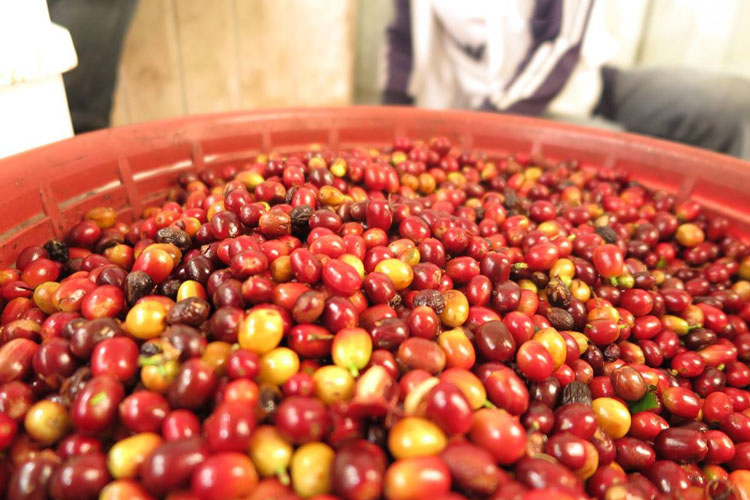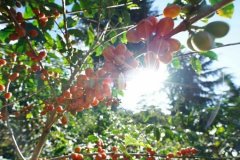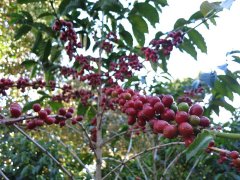Introduction to the Origin and Development History of Guji Abel Leaf small Farmer Coffee in Guji producing area of Ethiopia

For professional baristas, please follow the coffee workshop (Wechat official account cafe_style)
Just as Yega Xuefei became widely known after she became famous, she gradually became an independent producing area. Guji was independent into a new production area by the Ethiopian Commodity Exchange (ECX) in 2010. The Guji region, located in the southeast of Yegashefi, is adjacent to Sidamo and Gideo, with complex topographical changes such as towering mountains, highlands, plateaus, valleys and plains.
The geology of the area belongs to the nutrient-rich black soil (Vertisol), the depth of the soil is nearly two meters, and the average elevation is more than 1800 meters. The significant temperature difference between day and night created by geographical characteristics makes the local area have various local conditions for producing high-quality coffee. The biggest advantage of this place is that the soil vitality is maintained through the circulation of natural organic matter, using the withered leaves or litter of surrounding trees, plant residual roots and so on as natural fertilizer. Local coffee production comes from individual small farmers. When the production season comes, the ripe berries around the home are picked and sent to the treatment plant, and placed on a well-ventilated African scaffolding to control the temperature and fermentation degree. After removing the pulp, the water content is reduced to between 11.5% and 12%. When the post-processing is completed, it is exported through the competitive bidding system of ECX.
Gujiso's coffee beans have become increasingly well-known in recent years, and the Nekisse launched by Ninety Plus ®, which has attracted a lot of attention in recent years, and Derar Ela, launched by its sub-brand Level Up, are both from this producing area.
About Ethiopia
A variety of coffee cultivation methods can be found in Ethiopia, from wild coffee forests and semi-developed land to traditional small farms to modern estates. About 50% of the coffee trees are planted at an average altitude of about 1500 meters. The whole of Ethiopia can be divided into nine major coffee producing areas: Sidamo, Yega Sheffield, Hara, Lim, Rykamput, Gemma, Ibedo, Tibe, Bebeca and so on.
Cranberry, blueberry aroma, lemon black tea, black sugar, white pomelo, orange
Producing area / Guji Guji
Variety / Ethiopian native species Ethiopian Heirloom
Treatment / washing Washed
Planting altitude / 1900-2100 m
Baking degree / shallow baking
Important Notice :
前街咖啡 FrontStreet Coffee has moved to new addredd:
FrontStreet Coffee Address: 315,Donghua East Road,GuangZhou
Tel:020 38364473
- Prev

Introduction of Gaya Mantenin Organic Coffee in Jiayu area of Lake Tawa (Lake Tawar), Sumatra, Indonesia
For professional baristas, please follow the Coffee Workshop (official Wechat account cafe_style) around the scenic Jiayu area of Lake Lake Tawar, with abundant annual rainfall of average 2200mm and excellent average altitude, the coffee growing area is located at about 1100 to 1400 meters, with volcanic soil that helps to grow coffee. This area is usually made up of independent small farmers.
- Next

Manor Gesha Village Coffee Estate of Rosa Village, Suma Surma District, Ethiopia
Professional baristas follow the Coffee Workshop (Wechat official account cafe_style) located in the border area of Ethiopia and Kenya, there is a rose summer forest (Gesha Forest). The rose summer variety was discovered in 1931 and has been planted on Panamanian estates. Since 2004, this variety of rose has been invincible, elegant and unique in all major coffee bean competitions.
Related
- Detailed explanation of Jadeite planting Land in Panamanian Jadeite Manor introduction to the grading system of Jadeite competitive bidding, Red bid, Green bid and Rose Summer
- Story of Coffee planting in Brenka region of Costa Rica Stonehenge Manor anaerobic heavy honey treatment of flavor mouth
- What's on the barrel of Blue Mountain Coffee beans?
- Can American coffee also pull flowers? How to use hot American style to pull out a good-looking pattern?
- Can you make a cold extract with coffee beans? What is the right proportion for cold-extracted coffee formula?
- Indonesian PWN Gold Mandrine Coffee Origin Features Flavor How to Chong? Mandolin coffee is American.
- A brief introduction to the flavor characteristics of Brazilian yellow bourbon coffee beans
- What is the effect of different water quality on the flavor of cold-extracted coffee? What kind of water is best for brewing coffee?
- Why do you think of Rose Summer whenever you mention Panamanian coffee?
- Introduction to the characteristics of authentic blue mountain coffee bean producing areas? What is the CIB Coffee Authority in Jamaica?

